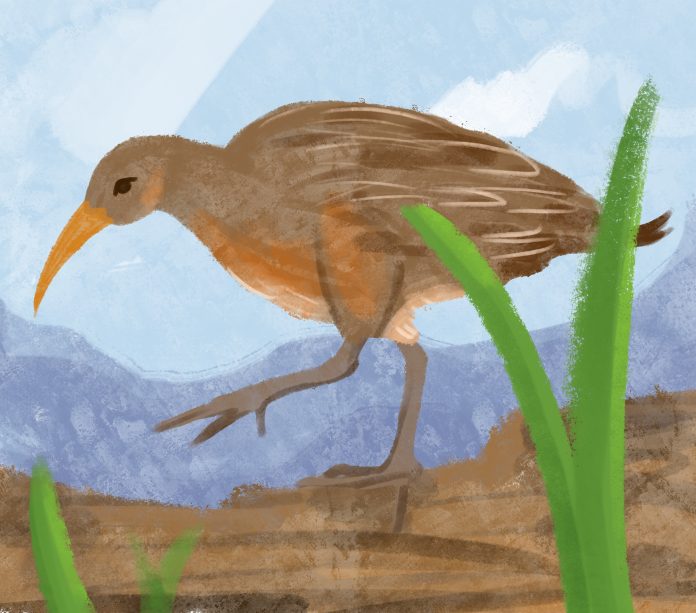Eric Kwon
Science & Technology Editor
The bird pecks its beak between the water plants towering above it. A snail hanging on the ledge of the wetland becomes the victim of its next meal. They’re rare, but perhaps you’ve seen this bird hanging around marshes while walking down the beach — the light-footed clapper rail, more recently known as Ridgway’s rail.
The light-footed clapper rail is distinct. Like other water birds, it sprouts slim but long legs that allow it to sift through wet surfaces with ease. It is modest in size, about the size of a hen. In contrast to the darker, grayish-brown feathers that cover the rest of its body, its underside is a softer color, closer to beige.
Outside of Santa Barbara, they are difficult to find. They live exclusively in the Pacific Southwest region, which includes places like the San Diego Bay and Seal Beach. Though it is wonderful to live in an area where they are present (assuming you are on campus), seeing one is becoming more uncommon. These birds are classified as an endangered species, with the loss and degradation of salt marshes playing a primal role in their dwindling numbers.
If by chance you do see a light-footed clapper rail, it is most likely during the early morning or late evening, as they are most active during that time. Although they can fly, they prefer to stay on the ground where they run with their nimble legs to get to where they need to go, sometimes even by climbing. That is not to say that they cannot swim; in fact, they swim very well and can dive into the water under the threat of danger.
As they live on marshes by the coastline, their diet is what you would find in a typical marsh. Being omnivores, they can feed on crabs, insects, worms, fish, eggs, etc. They do mostly eat animals, but at times they feed on seeds and vegetation, especially during the summer and winter seasons. They do not have a specific feeding style, and unlike what typically would be expected, they hunt by sight and change their directions erratically with many abrupt turns.
These birds make for a fascinating species to observe and play vital roles for marsh ecosystems. As previously mentioned, however, they are unfortunately very endangered, with only hundreds of light-footed clapper rails left. With the destruction of marsh habitats, the present and imminent effects of global warming will only accelerate the threat of their extinction.
As an endangered species, conservation efforts have been made in attempts to preserve their existence. Besides the legal protection that the Endangered Species Act grants, there have been programs implemented to support the growth of the birds’ numbers. One of these efforts is a partnership between SeaWorld San Diego, the United States Fish and Wildlife Service, and the Chula Vista Nature Center for a capture and release program.
If you are able to spot one of these light-footed clapper rails on a marsh near campus, know that you are one of few who have been able to lay their eyes on such a unique and lively creature. Though they are endangered, light-footed clapper rails are slowly but surely revitalizing their population numbers through active conservation efforts that hopefully the campus and the ecosystems around it will be able to enjoy.











